The Improvement of Indoor Air Quality in Residential Buildings in Dubai, UAE
Abstract
:1. Introduction
2. Materials and Methods
3. Results
3.1. Field Survey
3.2. Laboratory Experiment Results of Indoor Air Pollutants
3.3. Simulation on Radon Gas
3.4. Results
4. Discussion
5. Conclusions
Author Contributions
Funding
Institutional Review Board Statement
Informed Consent Statement
Data Availability Statement
Acknowledgments
Conflicts of Interest
References
- Improving Air Quality. 2021. Available online: https://u.ae/en/information-and-services/environment-and-energy/improving-air-quality (accessed on 10 April 2021).
- Air Quality Index: Sustainable Environment and Infrastructure. 2018. Available online: https://www.vision2021.ae/en/national-agenda-2021/list/card/air-quality-index (accessed on 12 April 2021).
- Air Quality in Dubai: Air Quality Index (AQI) and PM2.5 Air Pollution in Dubai. 2021. Available online: https://www.iqair.com/united-arab-emirates/dubai (accessed on 14 April 2021).
- Gugler, P.; Alburai, M.; Stalder, L. Smart City Strategy of Dubai, 1st ed.; Harvard Business School: Cambridge, MA, USA, 2021; pp. 10–14. [Google Scholar]
- Here Is Why You Need to Improve Indoor Air Quality during COVID-19. 2020. Available online: https://www.financialexpress.com/lifestyle/here-is-why-you-need-to-improve-indoor-air-quality-during-covid-19/2005904/ (accessed on 16 April 2021).
- Amoatey, P.; Omidvarborna, H.; Baawain, M.S.; Al-Mamun, A. Indoor air pollution and exposure assessment of the gulf cooperation council countries: A critical review. Environ. Int. 2018, 121, 491–506. [Google Scholar] [CrossRef]
- Sick Building Syndrome: The Killer within 2011. Available online: https://www.khaleejtimes.com/nation/general/sick-building-syndrome-the-killer-within (accessed on 26 May 2021).
- Hachicha, A.A.; Al-Sawafta, I.; Said, Z. Impact of dust on the performance of solar photovoltaic (PV) systems under United Arab Emirates weather conditions. Renew. Energy 2019, 141, 287–297. [Google Scholar] [CrossRef]
- Mannucci, P.M.; Franchini, M. Health effects of ambient air pollution in developing countries. Int. J. Environ. Res. Public Health 2017, 14, 1048. [Google Scholar] [CrossRef]
- Ahmed, R.; Robinson, R.; Mortimer, K. The epidemiology of noncommunicable respiratory disease in sub-Saharan Africa, the Middle East, and North Africa. Malawi Med. J. 2017, 29, 203–211. [Google Scholar] [CrossRef] [PubMed] [Green Version]
- Sick Building Syndrome Fixes. 2007. Available online: https://www.arabianbusiness.com/sick-building-syndrome-fixes-55788.html (accessed on 27 May 2021).
- Sick Building Syndrome—Don’t Let Your Home Make You Ill. 2017. Available online: https://gulfnews.com/business/property/sick-building-syndrome----dont-let-your-home-make-you-ill-1.1955765 (accessed on 28 May 2021).
- Johnson, R.M.; Babu, R.I.I. Time and cost overruns in the UAE construction industry: A critical analysis. Int. J. Constr. Manag. 2020, 20, 402–411. [Google Scholar] [CrossRef]
- Al-Hajj, A.; Hamani, K. Material waste in the UAE construction industry: Main causes and minimization practices. Archit. Eng. Des. Manag. 2011, 7, 221–235. [Google Scholar] [CrossRef]
- Sick Buildings Are Leading to Sick UAE Office Workers, Doctors Say. 2016. Available online: https://www.thenationalnews.com/uae/health/sick-buildings-are-leading-to-sick-uae-office-workers-doctors-say-1.175866 (accessed on 26 May 2021).
- Let’s Not Forget Indoor Air Quality as Well. 2020. Available online: https://gulfnews.com/business/analysis/lets-not-forget-indoor-air-quality-as-well-1.1589873286956#:~:text=The%20Dubai%20Municipality%20standard%20for,of%20continuous%20monitoring%20pre-occupancy (accessed on 24 May 2021).
- Green Building Regulations & Specifications. 2021. Available online: https://www.dewa.gov.ae/~/media/Files/Consultants%20and%20Contractors/Green%20Building/Greenbuilding_Eng.ashx (accessed on 4 April 2021).
- Abdul-Wahab, S.A.; En, S.C.F.; Elkamel, A.; Ahmadi, L.; Yetilmezsoy, K. A review of standards and guidelines set by international bodies for the parameters of indoor air quality. Atmos. Pollut. Res. 2015, 6, 751–767. [Google Scholar] [CrossRef]
- Fadeyi, M.O.; Alkhaja, K.; Sulayem, M.B.; Abu-Hijleh, B. Evaluation of indoor environmental quality conditions in elementary schools’ classrooms in the United Arab Emirates. Front. Archit. Res. 2014, 3, 166–177. [Google Scholar] [CrossRef] [Green Version]
- Ibrahim, H.A. Indoor Air Quality in UAE Office Buildings and Their Effects on Occupants’ Health, Comfort, Productivity and Performance. Ph.D. Thesis, The British University in Dubai, Dubai, United Arab Emirates, 2015. [Google Scholar]
- Pérez-Padilla, R.; Schilmann, A.; Riojas-Rodriguez, H. Respiratory health effects of indoor air pollution. Int. J. Tuberc. Lung Dis. 2010, 14, 1079–1086. [Google Scholar]
- Gharzeldeen, M.N.; Beheiry, S.M. Investigating the use of green design parameters in UAE construction projects. Int. J. Sustain. Eng. 2015, 8, 93–101. [Google Scholar] [CrossRef]
- Najini, H.; Nour, M.; Al-Zuhair, S.; Ghaith, F. Techno-Economic Analysis of Green Building Codes in United Arab Emirates Based on a Case Study Office Building. Sustainability 2020, 12, 8773. [Google Scholar] [CrossRef]
- Small, E.P.; Al Mazrooei, M. Evaluation of construction-specific provisions of sustainable design codes and standards in the United Arab Emirates. Procedia Eng. 2016, 145, 1021–1028. [Google Scholar] [CrossRef] [Green Version]
- Abu-Hijleh, B.; Jaheen, N. Energy and economic impact of the new Dubai municipality green building regulations and potential upgrades of the regulations. Energy Strategy Rev. 2019, 24, 51–67. [Google Scholar] [CrossRef]
- Mannan, M.; Al-Ghamdi, S.G. Indoor Air Quality in Buildings: A Comprehensive Review on the Factors Influencing Air Pollution in Residential and Commercial Structure. Int. J. Environ. Res. Public Health 2021, 18, 3276. [Google Scholar] [CrossRef]
- Sofia, D.; Gioiella, F.; Lotrecchiano, N.; Giuliano, A. Cost-benefit analysis to support decarbonization scenario for 2030: A case study in Italy. Energy Policy 2020, 137, 111137. [Google Scholar] [CrossRef]
- Yeatts, K.B.; El-Sadig, M.; Leith, D.; Kalsbeek, W.; Al-Maskari, F.; Couper, D.; Olshan, A.F. Indoor air pollutants and health in the United Arab Emirates. Environ. Health Perspect. 2012, 120, 687–694. [Google Scholar] [CrossRef] [PubMed]
- Ye, W.; Zhang, X.; Gao, J.; Cao, G.; Zhou, X.; Su, X. Indoor air pollutants, ventilation rate determinants and potential control strategies in Chinese dwellings: A literature review. Sci. Total Environ. 2017, 586, 696–729. [Google Scholar] [CrossRef]
- Djamil, B. Indoor radon mitigation in South Korea. Int. J. Appl. Eng. Res. 2016, 11, 8521–8523. [Google Scholar]
- Akbari, K.; Mahmoudi, J.; Ghanbari, M. Influence of indoor air conditions on radon concentration in a detached house. J. Environ. Radioact. 2013, 116, 166–173. [Google Scholar] [CrossRef]
- Chi, C.; Chen, W.; Guo, M.; Weng, M.; Yan, G.; Shen, X. Law and features of TVOC and Formaldehyde pollution in urban indoor air. Atmos. Environ. 2016, 132, 85–90. [Google Scholar] [CrossRef] [Green Version]
- Panagopoulos, I.K.; Karayannis, A.N.; Kassomenos, P.; Aravossis, K. A CFD simulation study of VOC and formaldehyde indoor air pollution dispersion in an apartment as part of an indoor pollution management plan. Aerosol Air Qual. Res. 2011, 11, 758–762. [Google Scholar] [CrossRef] [Green Version]
- Nielsen, G.D.; Wolkoff, P. Cancer effects of formaldehyde: A proposal for an indoor air guideline value. Arch. Toxicol. 2010, 84, 423–446. [Google Scholar] [CrossRef] [Green Version]
- Lent, T.; Silas, J.; Vallette, J. Chemical hazards analysis of resilient flooring for healthcare. HERD Health Environ. Res. Des. J. 2010, 3, 97–117. [Google Scholar] [CrossRef]
- Assael, M.J.; Kakosimos, K.E. Fires, Explosions, and Toxic Gas Dispersions: Effects Calculation and Risk Analysis, 1st ed.; CRC Press: Boca Raton, FL, USA, 2010; pp. 42–54. [Google Scholar]
- Liu, C.; Zhao, B.; Zhang, Y. The influence of aerosol dynamics on indoor exposure to airborne DEHP. Atmos. Environ. 2010, 44, 1952–1959. [Google Scholar] [CrossRef]
- Tran, V.V.; Park, D.; Lee, Y.C. Indoor air pollution, related human diseases, and recent trends in the control and improvement of indoor air quality. Int. J. Environ. Res. Public Health 2020, 17, 2927. [Google Scholar] [CrossRef] [Green Version]
- Uzoigwe, J.C.; Prum, T.; Bresnahan, E.; Garelnabi, M. The emerging role of outdoor and indoor air pollution in cardiovascular disease. N. Am. J. Med. Sci. 2013, 5, 445–453. [Google Scholar] [PubMed]
- Zamani, M.E.; Jalaludin, J.; Shaharom, N. Indoor air quality and prevalence of sick building syndrome among office workers in two different offices in Selangor. Am. J. Appl. Sci. 2013, 10, 1140–1147. [Google Scholar] [CrossRef] [Green Version]
- Kim, E.H.; Kim, S.; Lee, J.H.; Kim, J.; Han, Y.; Kim, Y.M.; Ahn, K. Indoor air pollution aggravates symptoms of atopic dermatitis in children. PLoS ONE 2015, 10, e0119501. [Google Scholar] [CrossRef] [PubMed] [Green Version]
- McClellan, R.O. Role of science and judgment in setting national ambient air quality standards: How low is low enough? Air Qual. Atmos. Health 2012, 5, 243–258. [Google Scholar] [CrossRef] [Green Version]
- Guerreiro, C.B.; Foltescu, V.; De Leeuw, F. Air quality status and trends in Europe. Atmos. Environ. 2014, 98, 376–384. [Google Scholar] [CrossRef] [Green Version]
- Sofia, D.; Lotrecchiano, N.; Giuliano, A.; Barletta, D.; Poletto, M. Optimization of number and location of sampling points of an air quality monitoring network in a n urban contest. Chem. Eng. Trans. 2019, 74, 277–282. [Google Scholar]
- Sofia, D.; Giuliano, A.; Gioiella, F. Air quality monitoring network for tracking pollutants: The case study of Salerno city center. Chem. Eng. Trans. 2018, 68, 67–72. [Google Scholar]
- Introduction to Indoor Air Quality (IAQ). 2021. Available online: https://www.epa.gov/indoor-air-quality-iaq/introduction-indoor-air-quality (accessed on 8 April 2021).
- Indoor Air Quality Guide. 2021. Available online: https://www.ashrae.org/technical-resources/bookstore/indoor-air-quality-guide (accessed on 14 April 2021).
- Švajlenka, J.; Kozlovská, M.; Pošiváková, T. Assessment and biomonitoring indoor environment of buildings. Int. J. Environ. Health Res. 2017, 27, 427–439. [Google Scholar] [CrossRef] [PubMed]
- Švajlenka, J.; Kozlovská, M.; Pošiváková, T. Biomonitoring the indoor environment of agricultural buildings. Ann. Agric. Environ. Med. 2018, 25, 292–295. [Google Scholar] [CrossRef] [PubMed] [Green Version]
- Švajlenka, J.; Kozlovská, M.; Pošiváková, T. Analysis of the indoor environment of agricultural constructions in the context of sustainability. Environ. Monit. Assess. 2019, 191, 1–21. [Google Scholar] [CrossRef] [PubMed]
- Appleton, J.D. Radon in air and water. In Essentials of Medical Geology; Selinus, O., Ed.; Springer: Dordrecht, The Netherlands, 2013; pp. 227–263. [Google Scholar]
- Mowlavi, A.A.; Fornasier, M.R.; Binesh, A.; De Denaro, M. Indoor radon measurement and effective dose assessment of 150 apartments in Mashhad, Iran. Environ. Monit. Assess. 2012, 184, 1085–1088. [Google Scholar] [CrossRef]
- Persily, A. Challenges in developing ventilation and indoor air quality standards: The story of ASHRAE Standard 62. Build. Environ. 2015, 91, 61–69. [Google Scholar] [CrossRef] [PubMed]
- Eisenberg, S. NIOSH safe handling of hazardous drugs guidelines becomes state law. J. Infus. Nurs. 2012, 35, 316–319. [Google Scholar] [CrossRef]
- Yauk, M.; Stenson, J.; Donor, M.; Van Den Wymelenberg, K. Evaluating Volatile Organic Compound Emissions from Cross-Laminated Timber Bonded with a Soy-Based Adhesive. Buildings 2020, 10, 191. [Google Scholar] [CrossRef]
- Mermet, K.; Sauvage, S.; Dusanter, S.; Salameh, T.; Léonardis, T.; Flaud, P.M.; Locoge, N. Optimization of a gas chromatographic unit for measuring biogenic volatile organic compounds in ambient air. Atmos. Meas. Tech. 2019, 12, 6153–6171. [Google Scholar] [CrossRef] [Green Version]
- Yang, S.; Gao, K.; Yang, X. Volatile organic compounds (VOCs) formation due to interactions between ozone and skin-oiled clothing: Measurements by extraction-analysis-reaction method. Build. Environ. 2016, 103, 146–154. [Google Scholar] [CrossRef]
- Li, J.; Dasgupta, P.K.; Luke, W. Measurement of gaseous and aqueous trace formaldehyde: Revisiting the pentanedione reaction and field applications. Anal. Chim. Acta 2005, 531, 51–68. [Google Scholar] [CrossRef]
- Faustini, A.; Rapp, R.; Forastiere, F. Nitrogen dioxide and mortality: Review and meta-analysis of long-term studies. Eur. Respir. J. 2014, 44, 744–753. [Google Scholar] [CrossRef] [PubMed] [Green Version]
- Hill, R.J.; Smith, P.A. Exposure Assessment for carbon dioxide gas: Full shift average and short-term measurement approaches. J. Occup. Environ. Hyg. 2015, 12, 819–828. [Google Scholar] [CrossRef]
- Chen, C.; Zhao, B. Review of relationship between indoor and outdoor particles: I/O ratio, infiltration factor and penetration factor. Atmos. Environ. 2011, 45, 275–288. [Google Scholar] [CrossRef]
- Nematchoua, M.K.; Tchinda, R.; Orosa, J.A.; Andreasi, W.A. Effect of wall construction materials over indoor air quality in humid and hot climate. J. Build. Eng. 2015, 3, 16–23. [Google Scholar] [CrossRef] [Green Version]
- Al-Jarallah, M.I.; Musazay, M.S.; Aksoy, A. Correlation between radon exhalation and radium content in granite samples used as construction material in Saudi Arabia. Radiat. Meas. 2005, 40, 625–629. [Google Scholar] [CrossRef]
- Harb, P.; Locoge, N.; Thevenet, E.F. Emissions and treatment of VOCs emitted from wood-based construction materials: Impact on indoor air quality. Chem. Eng. J. 2018, 354, 641–652. [Google Scholar] [CrossRef]
- Xiu, F.R.; Lu, Y.; Qi, Y. DEHP degradation and dechlorination of polyvinyl chloride waste in subcritical water with alkali and ethanol: A comparative study. Chemosphere 2020, 249, 126138. [Google Scholar] [CrossRef]
- Giosuè, C.; Belli, A.; Mobili, A.; Citterio, B.; Biavasco, F.; Ruello, M.L.; Tittarelli, F. Improving the impact of commercial paint on indoor air quality by using highly porous fillers. Buildings 2017, 7, 110. [Google Scholar] [CrossRef] [Green Version]
- Lynes, J. Zero VOC; eco-friendly paint for commercial applications. Adv. Coat. Surf. Technol. 2013, 26, 1–3. [Google Scholar]
- Developers Cut Unit Size to Make Homes Affordable in Dubai. 2019. Available online: https://www.khaleejtimes.com/developers-cut-unit-size-to-make-homes-affordable-in-dubai (accessed on 12 April 2021).
- Guo, C.; Gao, Z.; Shen, J. Emission rates of indoor ozone emission devices: A literature review. Build. Environ. 2019, 158, 302–318. [Google Scholar] [CrossRef]
- Labour Camps a Neglected Area. 2004. Available online: https://www.khaleejtimes.com/nation/general/labour-camps-a-neglected-area (accessed on 26 May 2021).
- Gulf’s Migrant Workers Left Stranded and Struggling by Coronavirus Outbreak. 2020. Available online: https://www.reuters.com/article/uk-health-coronavirus-gulf-workers-idUKKCN21W1NZ (accessed on 26 May 2021).


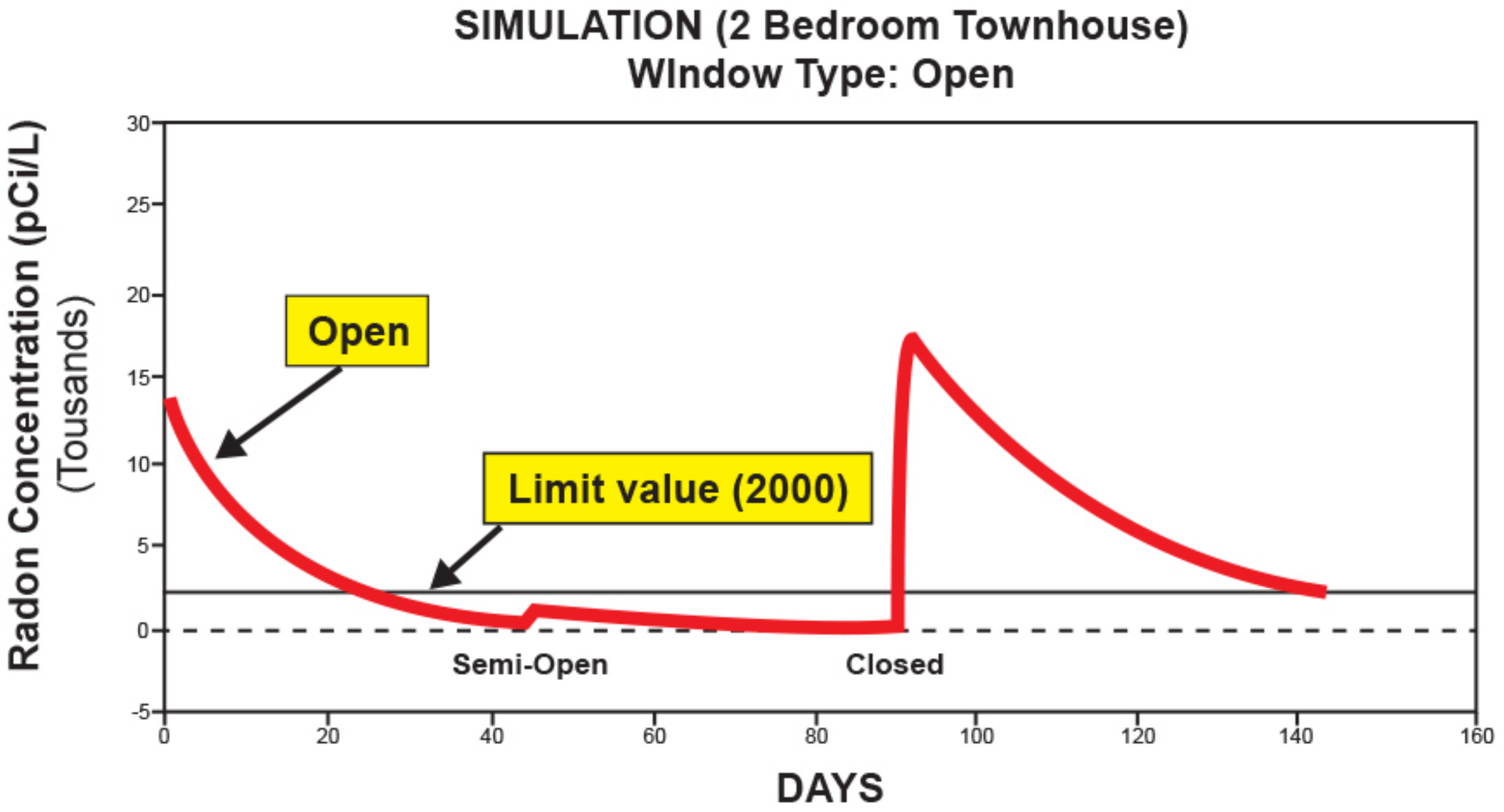
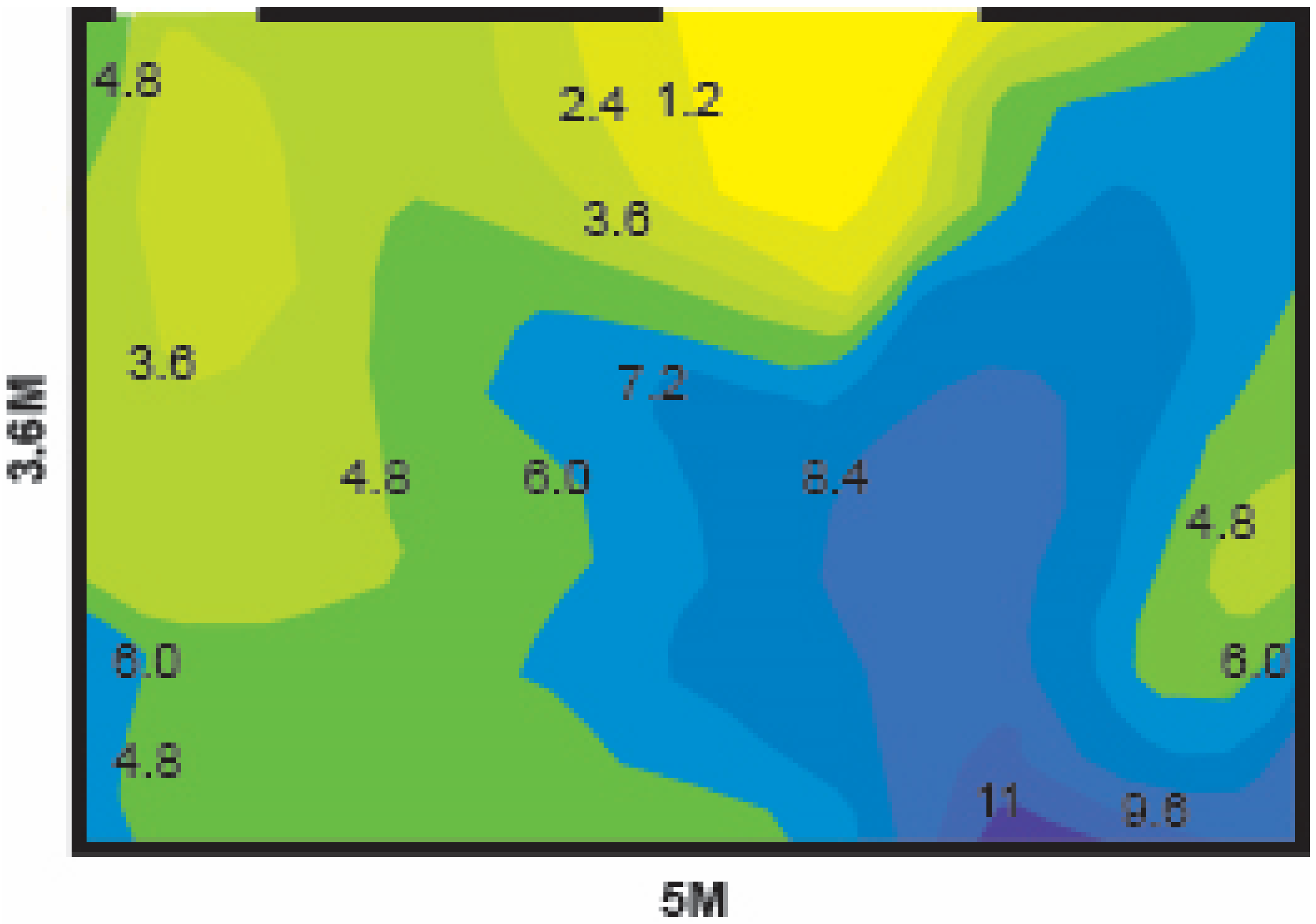
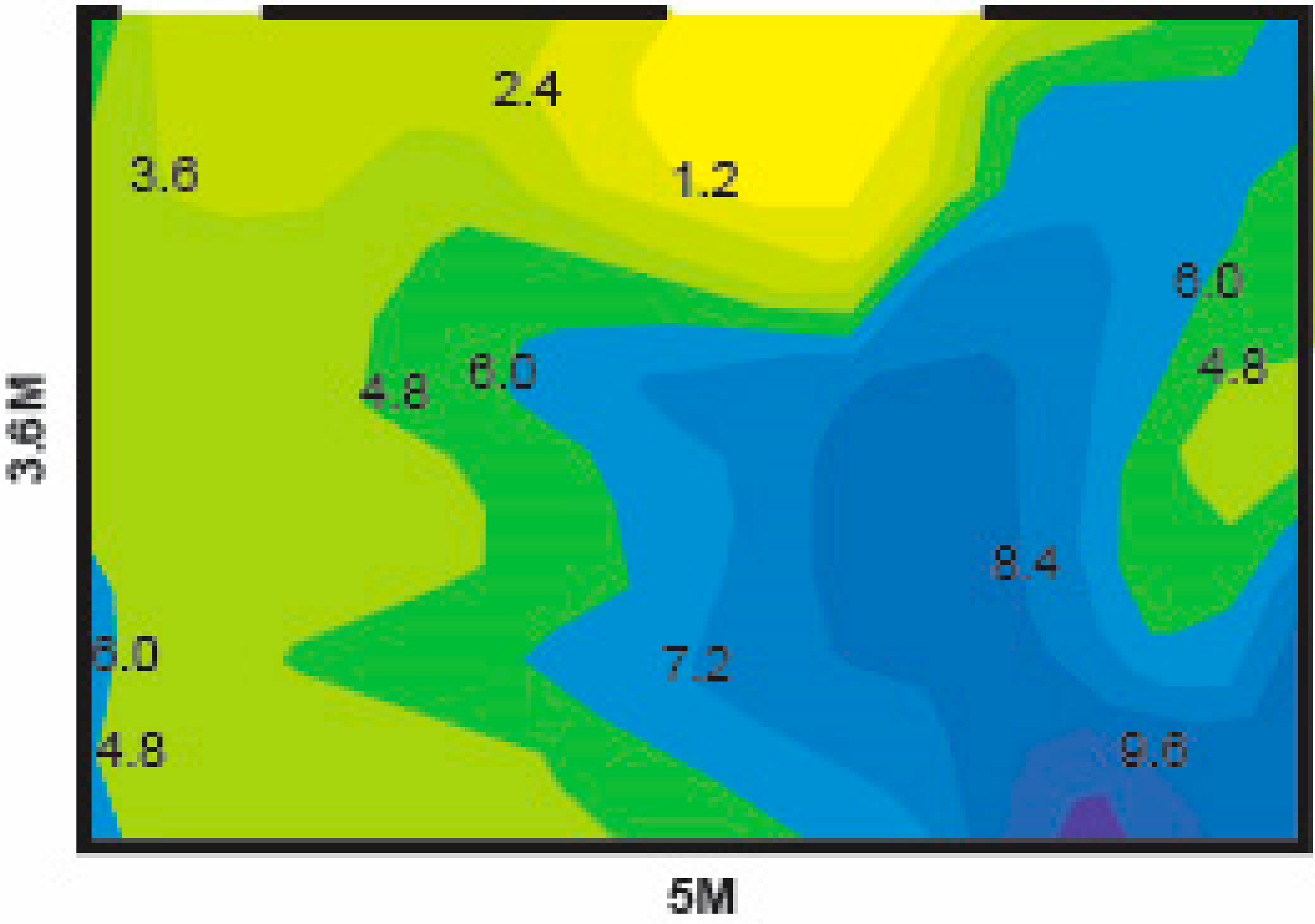
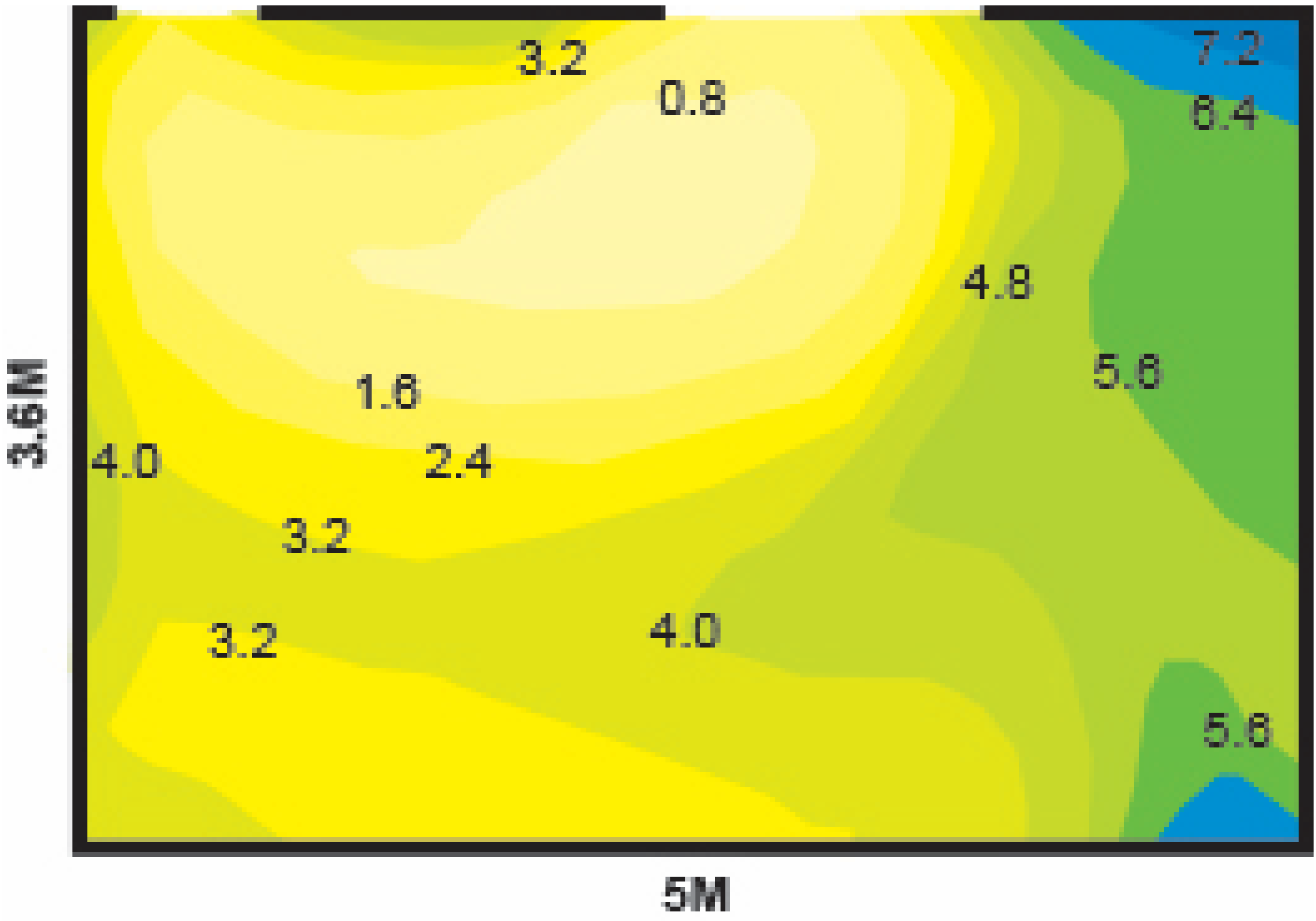
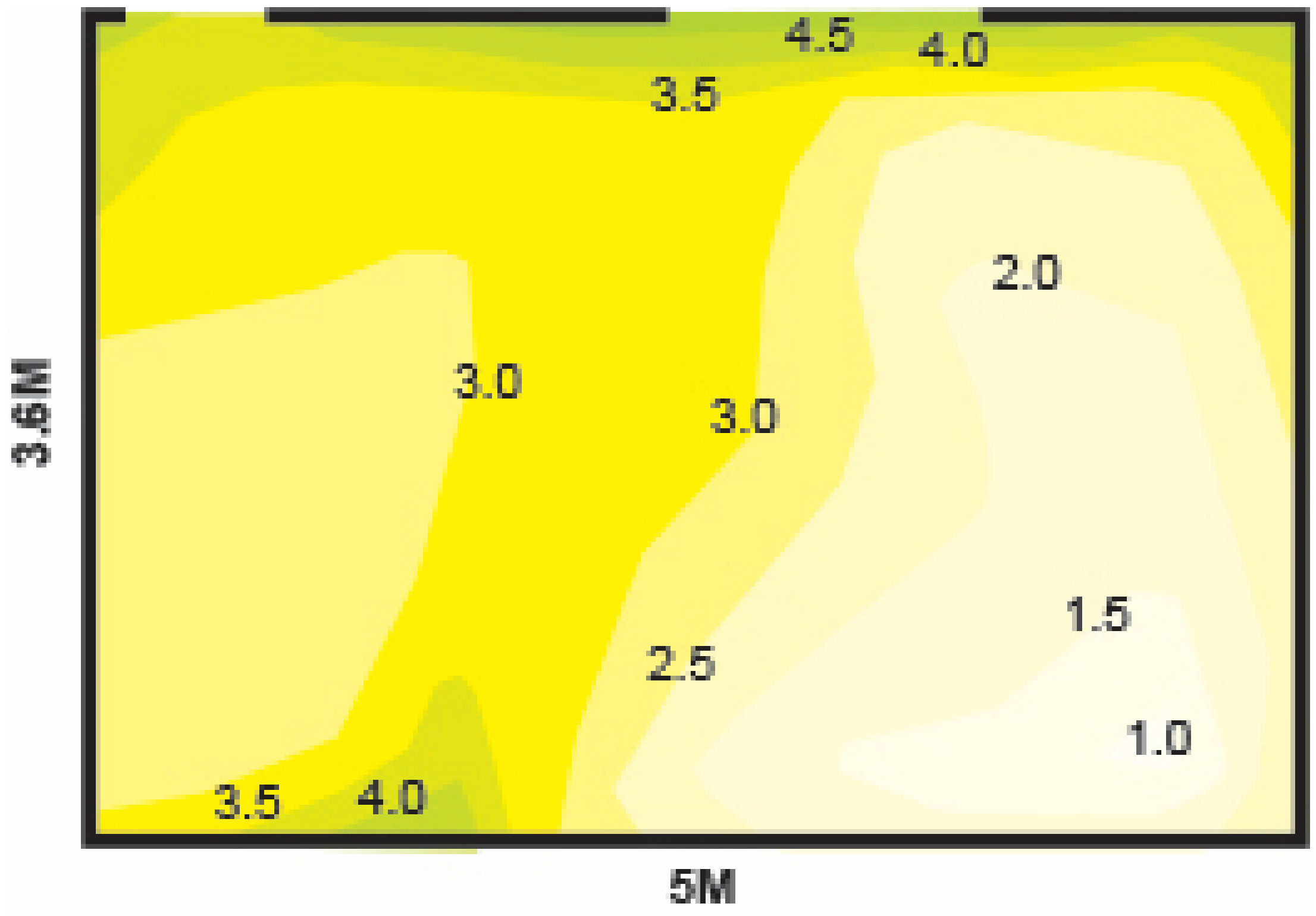
| Pollutant | Global Standards for Indoor Air |
|---|---|
| Carbon Dioxide (CO2) | 1000 ppm (Japanese Building Standards Act) 1000 ppm (ASHRAE) |
| Carbon Monoxide (CO) | 10 ppm (Japanese Building Standards Act & Building Hygiene Management Act) 20 ppm (Japanese School Hygiene Standards) 8.6 ppm (WHO Europe: 8 Hour Average) 9 ppm (US NAAQS (National Ambient Air Quality Standards): 8 Hour Average) |
| Formaldehyde (CH2O) | 0.1 ppm (ASHRAE) 0.08 ppm (WHO Europe) 0.08 ppm (Dubai Municipality, 8 Hour Average) |
| Nitrogen Dioxide (NO2) | 0.21 ppm (WHO Europe: 1 Hour Average) 0.075 ppm (WHO Europe: 24 Hour Average) 0.053 ppm (NAAQS: 24 Hour Average) |
| Radon | 4.0 pCi/L (EPA) 2.0 pCi/L (ASHRAE) |
| Total Suspended Particles (TSP) | 0.15 mg/m3 (Japanese Building Hygiene Management Act/Building Standards Act) 0.1–0.12 mg/m3 (WHO, 8 Hour Average) 150 µg/m3 (Dubai Municipality, 8 Hour Average) |
| Volatile organic compounds (VOCs) | 0.2–0.6 mg/m3 (FISIAQ (Finnish Society of Indoor Air Quality and Climate)) 300 µg/m3 (Dubai Municipality, 8 Hour Average) |
| Pollutants | Building Type | Concentration | Indoor/Outdoor Concentration Ratio | |
|---|---|---|---|---|
| Indoor Average | Outdoor Average | |||
| Radon Gas (unit: pCi/L) | New Townhouses (2) | 1.46 (Max 4.56) | 0.11 | 12.24 |
| Existing Townhouses (2) | 0.79 (Max 2.70) | 0.45 | 1.73 | |
| Labor Camp House (2) | 2.55 (Max 6.63) | 0.58 | 4.32 | |
| Showhouse (2) | 0.03 | 0.02 | 1.4 | |
| Volatile organic compounds (unit: ppm) | New Townhouses (2) | 0.4024 | 0.0401 | 10.0 |
| Existing Townhouses (2) | 0.1151 | Not Detected | - | |
| Labor Camp House (2) | 0.0655 | 0.0121 | 5.3 | |
| Showhouse (2) | 2.996 | 0.037 | 78.8 | |
| Formaldehyde (unit: ppb) | New Townhouses (2) | 308.1 | 62.9 | 4.8 |
| Existing Townhouses (2) | 95.0 | 53.0 | 1.7 | |
| Labor Camp House (2) | 93.6 | 23.1 | 4.0 | |
| Showhouse (2) | 421.1 | 121.4 | 3.4 | |
| Nitrogen Dioxide (unit: ppb) | Existing Townhouses (2) | Before Cooking | 22.6 | 1.5 |
| Not Detected | ||||
| After Cooking | ||||
| 36.8 (Max 60.8) | ||||
| Carbon Dioxide (unit: ppm) | Existing Townhouses (2) | 816.1 | 331.3 | 2.4 |
| Labor Camp House (2) | 3001.8 | 633.1 | 4.6 | |
| Total Suspended Particles (unit: µg/m3) | Existing Townhouses (2) | 45.0 | 20.1 | 2.2 |
| Labor Camp House (2) | 179.3 | 28.2 | 6.3 | |
| Average Pressure Difference (Kpa) | Radon Concentration (pCi/m2h) | |||
|---|---|---|---|---|
| Material | Average | |||
| Concrete | Reinforced Concrete | Not Examined | 599 | 514 |
| Precast Concrete | Not Examined | 429 | ||
| Cipolin | Original | Not Examined | 386 | 409 |
| Shattered | Not Examined | 432 | ||
| Gypsum Board | General | 0.005 | 2179.1 | 1819 |
| Steam Cured | 0.004 | 1458.8 | ||
| Red Clay | Pure Red Clay | 0.045 | 2813.8 | 3104 |
| Pure Red Clay + Ceramic (50%) | 0.042 | 3200.1 | ||
| Pure Red Clay + Ceramic (100%) | 0.044 | 4449.2 | ||
| Pure Red Clay + Special Coating | 0.044 | 1955.6 | ||
| General Petrochemical Product (Unit: ppm/m2) | Natural Materials-Based Product (Unit: ppm/m2) | ||||||||
|---|---|---|---|---|---|---|---|---|---|
| Oil Paint | No A/C | A/C | Overall Average | Oil Paint | No A/C | A/C | Overall Average | ||
| VOCs | Benzene | N/D | N/D | N/D | VOCs | Benzene | 0.444 | N/D | 0.222 |
| Toluene | 4.1 | 1.1 | 2640 | Toluene | 2.480 | 1.000 | 1.748 | ||
| Xylene | 34,490 | 23,600 | 29,100 | Xylene | N/D | N/D | N/D | ||
| TVOC | 38,600 | 24,740 | 31,740 | TVOC | 2.944 | 1.000 | 1.972 | ||
| Aqueous Paint | No A/C | A/C | Overall Average | Aqueous Paint | No A/C | A/C | Overall Average | ||
| Average | Average | Average | Average | ||||||
| VOCs | Benzene | 0.785 | 0.700 | 0.065 | VOCs | Benzene | 0.102 | N/D | 0.051 |
| Toluene | 2.190 | 0.924 | 1.562 | Toluene | N/D | N/D | N/D | ||
| Xylene | N/D | N/D | N/D | Xylene | N/D | N/D | N/D | ||
| TVOC | 1.010 | 1.624 | 1.626 | TVOC | 0.102 | N/D | 0.051 | ||
| Benzene | Toluene | Ethylbenzene | Xylene | TVOC | ||
|---|---|---|---|---|---|---|
| PET | 25 °C | N/D | 1.57 | 0.40 | 1.18 | 3.178 |
| 35 °C | N/D | 1.86 | 0.47 | 1.86 | 4.220 | |
| 50 °C | 0.46 | 15.42 | 2.18 | 3.88 | 21.97 (6.9 times) | |
| NON-UV | 25 °C | 1.50 | 1.41 | 1.02 | 0.74 | 4.71 |
| 35 °C | 10.04 | 2.64 | 1.68 | 1.23 | 15.5 | |
| 50 °C | 10.32 | 7.02 | 2.56 | 2.12 | 22.05 (4.7 times) | |
| UV | 25 °C | N/D | 0.12 | 0.14 | 0.12 | 0.4 |
| 35 °C | 0.24 | 0.43 | 0.76 | 0.66 | 2.10 | |
| 50 °C | 2.01 | 0.88 | 1.30 | 1.70 | 5.92 (14.8 times) | |
| Opening Type and Size | Size (m) | Closed (m2) | Semi-Open (m2) | Fully Open (m2) | |
|---|---|---|---|---|---|
| 2-Bedroom Townhouse | Room 1 | 2.3 × 2.4 | 0.0029 | 2.7 | 5.4 |
| Room 2 | 1.5 × 1.6 | 0.0019 | 1.2 | 2.3 | |
| Kitchen | 2.7 × 0.5 | 0.0018 | 0.7 | 1.4 | |
| Living Room | 3.0 × 2.4 | 0.0033 | 2.3 | 7.0 | |
| Room 3 | 3.0 × 2.0 | 0.0035 | 3.0 | 6.0 | |
| Total | 0.0029 | 1.74 | 3.58 | ||
| The Amount of Ventilation (Q: m3/h) | 25 | 6467 | 13,297 | ||
| The Size of the Room | 5 m × 3.6 m × 3 m | |
| Opening | Window: 1.2 m × 0.6 m, Door: 1.8 m × 0.9 m | |
| Pollutant | Type | Radon |
| Radiation | 0.0320 pCi/secm2 | |
| Radiation Area | 15.72 m2 | |
| Ventilation Frequency | 0.5 times/h, 1.0 times/h, 3.0 times/h, 5.0 times/h | |
Publisher’s Note: MDPI stays neutral with regard to jurisdictional claims in published maps and institutional affiliations. |
© 2021 by the authors. Licensee MDPI, Basel, Switzerland. This article is an open access article distributed under the terms and conditions of the Creative Commons Attribution (CC BY) license (https://creativecommons.org/licenses/by/4.0/).
Share and Cite
Jung, C.; Awad, J. The Improvement of Indoor Air Quality in Residential Buildings in Dubai, UAE. Buildings 2021, 11, 250. https://doi.org/10.3390/buildings11060250
Jung C, Awad J. The Improvement of Indoor Air Quality in Residential Buildings in Dubai, UAE. Buildings. 2021; 11(6):250. https://doi.org/10.3390/buildings11060250
Chicago/Turabian StyleJung, Chuloh, and Jihad Awad. 2021. "The Improvement of Indoor Air Quality in Residential Buildings in Dubai, UAE" Buildings 11, no. 6: 250. https://doi.org/10.3390/buildings11060250
APA StyleJung, C., & Awad, J. (2021). The Improvement of Indoor Air Quality in Residential Buildings in Dubai, UAE. Buildings, 11(6), 250. https://doi.org/10.3390/buildings11060250







